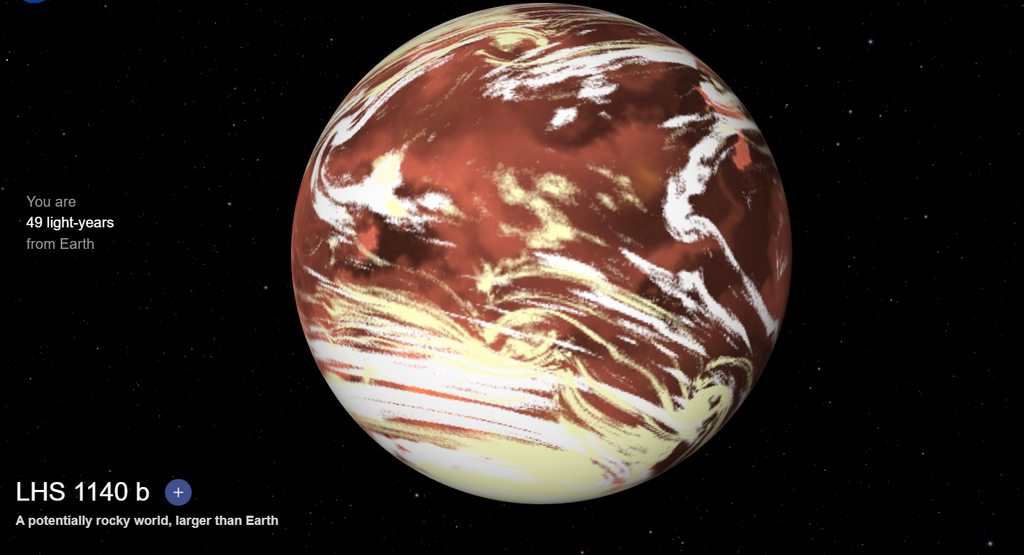Getting your Trinity Audio player ready...
Using images from the James Webb Space Telescope, astronomers discovered an exo-planet previously seen in 2017 may be an "eyeball" planet with a large body of liquid water.
LHS 1140 b is a rocky super-Earth exoplanet located approximately 39-50 light-years away, orbiting a red dwarf star within the habitable "Goldilocks" zone suitable for liquid water.
The exoplanet is estimated to be 1.7 times the size of Earth, with a mass of 5.6 times that of Earth.
Recent estimates suggest 10 to 20% of the exoplanet's mass could be water, potentially existing as a liquid substellar ocean or being encased in an icy sea.
It may be an "eyeball" planet with an iris-like ocean surrounded by solid ice.
The exoplanet may have a nitrogen-rich atmosphere similar to Earth's, further increasing its potential for habitability, with a possible surface temperature around 20°C.
Observations from the James Webb Space Telescope and other telescopes are needed to confirm its atmosphere's composition, the presence of liquid water, and whether it could be an "eyeball" planet.
This article was written in collaboration with Generative AI news company Alchemiq
Sources: Newsweek, LiveScience, Futurism, The Sun, Mashable, ScienceDaily, Correio Braziliense, SciTechDaily, Knowridge, Eurasia Review, Sci.News, Future Timeline, The Debrief, Trust My Science, Daily Mail, Bild.


